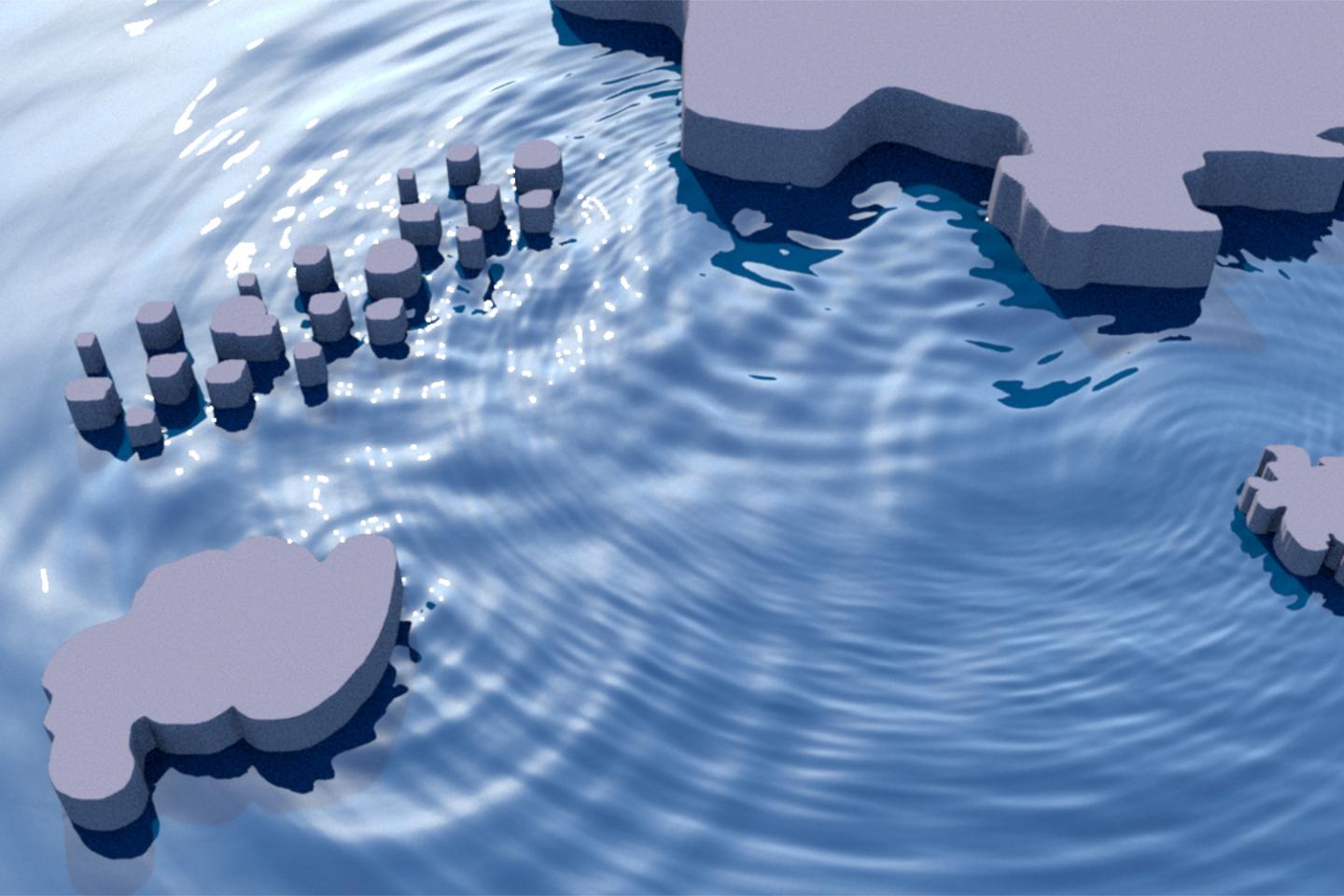Researchers at IST Austria have developed a method that realistically models water wave animations at a significantly lower computational expense

Credit: Camille Schreck
In general, water wave simulations are based on one of two available methods. ‘Fourier-based’ methods are efficient but cannot model complicated interactions, such as water hitting the shore of an island. More elaborate, ‘numerical’ techniques, on the other hand, can simulate a wide range of such effects but are much more expensive computationally. As a result, detailed scenes such as ripples forming as a wave interacts with an island or even a boat passing by are practically impossible due to the sheer processing time and computational power needed. Computer Scientists from Christoph Wojtan’s research team at IST Austria have now developed a method that makes it possible to animate realistic waves and their interaction with solid objects, at a large scale and also in a computationally efficient manner.
From theory to industry
Achieving this feat required innovation and a deep understanding of the physics involved by solving complex mathematical equations that model wave-surface interactions. With SIGGRAPH 2019, the annual conference on computer graphics convened by the ACM SIGGRAPH (Special Interest Group on Computer GRAPHics and Interactive Techniques) organization coming up at the end of July, the team will showcase their methods at the conference and see numerous applications to the movie and video game industry. Scenes such as boats moving past islands and rain droplets hitting water are possible with this method and are now demonstrated to be computationally efficient to do so.
###
Media Contact
Kathrin Pauser
[email protected]



